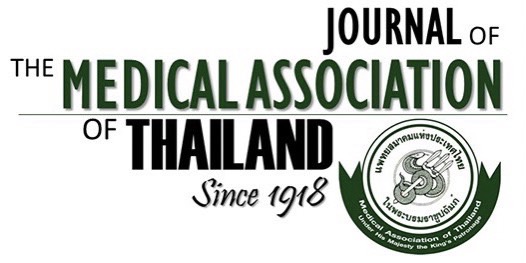Efficacy and Complications of Ultrasound-Guided Continuous Brachial Plexus Block in Upper Extremity Surgery
Suwimon Tangwiwat MD*, Busara Sirivanasandha MD*, Pathom Halilamien MD*, Vimolluck Sanansilp MD*, Thitima Chinachot MD*, Torpon Wattana MD*, Jutharat Rermluk MD*, Panaporn Kongmun MD*
Affiliation : * Department of Anesthesiology, Faculty of Medicine Siriraj Hospital, Mahidol University, Bangkok, Thailand
Objective : Continuous brachial plexus block is part of multimodal analgesia for upper extremity surgery. This study evaluated
the efficacy and complication rate of continuous ultrasound-guided brachial plexus analgesia for postoperative pain management
after upper extremity surgery.
Material and Method: This prospective case series included >18-years old, ASA I-III patients, scheduled for upper extremity
surgery. Depending on the surgical approach (upper or lower arm) ultrasound-guided interscalene or infraclavicular
brachial plexus catheter (IS, IC) were applied. For both techniques 10 ml of lidocaine 2% with epinephrine 5 mg/ml was
injected and followed by 10 ml (IS) or 20 ml (IC) of levobupivacaine 0.5%. The block was defined successful with complete
sensory and motor blockade of upper extremity at 20 min post-procedure. Postoperative patient-controlled perineural
levobupivacaine infusion plus multimodal analgesia were administered for pain management. The outcomes included pain
evaluation using numeric rating scales (0 to 10), opioid requirement, side effects, ward nurses and patients’ satisfaction and
technique-related complications within 72 hours were daily evaluated.
Results : Twenty-two patients were included. The success rate of both techniques was 100%. Catheters were maintained
2.82+1.33 days. Within 72 h postoperatively, 95.5 to 100% and 77.3 to 95% of the patients had mild pain (NRS 0 to 3) at rest
and on movement respectively. One third (36.4%) of the patients had opioid-free requirement. Most patients (81.8%) were
very satisfied with pain management. There were 16 cases (72.7%) noted for technical problems with catheters. Three
patients (13.6%) suffered from nausea and vomiting. There was no CBPB-related major adverse event, but one had partly
reversible radial and ulnar nerve injury, possibly due to prolonged tourniquet application.
Conclusion : Continuous ultrasound-guided brachial plexus block is effective pain management and few major adverse
events in upper extremity surgery.
Keywords : Continuous brachial plexus block (CBPB), Ultrasound-guided, Interscalene catheter, Infraclavicular catheter, Perineural infusion



